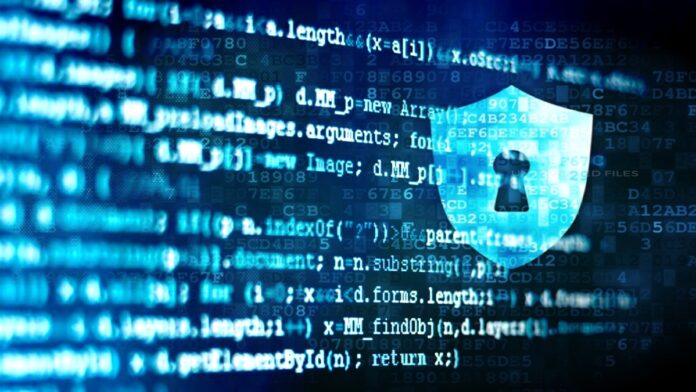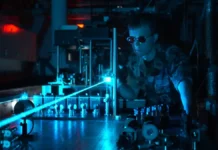At the beginning of the 1970s a study based on Heisenberg’s Uncertainty Principle and Quantum Entanglement, demonstrated how to encode two signals into two “conjugate observables,” such as linear and circular photon polarisation, so that only one of them may be received and decoded. The most vital link in the chain of data security is cryptography. However, it is dangerous to assume that cryptographic keys will always be secure. Data can potentially be encrypted with quantum cryptography for a longer amount of time than using traditional cryptography. So What is this Quantum Cryptography? Learn more…
Contents
- 1 What is Quantum Cryptography?
- 2 How did the Idea of Quantum Cryptography Begin?
- 3 How does Quantum Cryptography Work?
- 4 Applications of Quantum Cryptography and Illustrations
- 5 Future Applications of Quantum Cryptography
- 6 Advantages and Limitations of Quantum Cryptography
- 7 How Quantum Cryptography is Different from the Conventional Cryptography?
- 8 Conclusion
- 9 Sources
What is Quantum Cryptography?
The science of using quantum mechanical principles for encryption is known as quantum cryptography. Quantum key distribution, which provides an information-theoretically safe solution to the key exchange problem, is the most well-known example of quantum cryptography. Compared to conventional cryptography, quantum cryptography enables users to communicate more securely.
The benefit of quantum cryptography is that it makes it possible to perform a variety of cryptographic operations that have been demonstrated or are hypothesized to be impractical when using only classical (i.e., non-quantum) communication. For instance, copying data encoded in a quantum state is impossible. The quantum state will change if the encoded data is read because of wave function collapse (no-cloning theorem). This could be used to identify eavesdropping during the distribution of quantum keys (QKD).
To secure and transmit data in a way that cannot be intercepted, quantum cryptography employs the inherent features of quantum physics. Data is encrypted and protected using cryptography so that only those with the proper secret key may decrypt it. In contrast to conventional cryptographic systems, quantum cryptography uses physics rather than mathematics as the primary component of its security concept.
In other words, Quantum cryptography is a system that cannot be broken into without the transmitter or recipient of the message being aware of it. It is therefore impossible to copy or read data encoded in a quantum state without disclosing the act to the sender or recipient. Quantum cryptography ought to be impervious to quantum computer users as well. In quantum cryptography, data is sent across fiber optic wire using individual light particles, or photons. Photons represent binary bits. Quantum physics is a key component of the system’s security.
How did the Idea of Quantum Cryptography Begin?
The development of quantum cryptography may be traced back to the work of Stephen Wiesner and Gilles Brassard. Wiesner presented the idea of quantum conjugate coding at Columbia University in New York in the early 1970s. His groundbreaking study, “Conjugate Coding,” was eventually published in 1983 in SIGACT News after being rejected by the IEEE Information Theory Society. In this study, he demonstrated how to encode two signals into two “conjugate observables,” such as linear and circular photon polarisation, so that only one of them may be received and decoded.
They did not figure out how to incorporate Wiesner’s findings until they met Charles H. Bennett of IBM’s Thomas J. Watson Research Center and Gilles Brassard in 1979 at the 20th IEEE Symposium on the Foundations of Computer Science, held in Puerto Rico. Our realization that photons were never intended to store information but rather to transmit it was the main turning point. Building on this research, Bennett, and Brassard proposed the BB84 secure communication method in 1984.
David Deutsch suggested using Bell’s inequalities and quantum non-locality to achieve secure key distribution. In his 1991 paper, Artur Ekert went into greater detail to analyze entanglement-based quantum key distribution. In Kak’s three-stage technique, random polarisation rotations by both sides have been suggested. If single photons are employed, this technique may theoretically be used for continuous, impenetrable data encryption.
The fundamental polarization rotation strategy has been put in place, this is an approach to quantum cryptography that is solely based on quantum mechanics, as opposed to quantum key distribution, where the actual encryption is classical. The quantum key distribution techniques are built on the BB84 method. MagiQ Technologies, Inc. (Boston, Massachusetts, United States), ID Quantique (Geneva, Switzerland), QuintessenceLabs (Canberra, Australia), Toshiba (Tokyo, Japan), QNu Labs, and SeQureNet are among the businesses that produce quantum cryptography systems.
Quantum Cryptographies Safe Areas Consist of the following
A quantum attribute cannot be observed without affecting or upsetting it, particles can exist in more than one location or state at once, and entire particles cannot be replicated. Any system’s quantum state cannot be measured due to these characteristics without causing it to change.
Because they possess all the requirements for quantum cryptography, photons are utilized in this technology. They function as information carriers in optical fiber lines and their behavior is well characterized. Quantum key distribution (QKD), which offers a secure technique for key exchange, is one of the most well-known examples of quantum cryptography.
How does Quantum Cryptography Work?
Theoretically, quantum cryptography operates by adhering to a 1984 model. The simulation assumes that Alice and Bob are two individuals who want to securely communicate. Alice starts the communication by delivering a key to Bob. A stream of photons that move in only one direction holds the secret. Every photon is a single bit of information, either a 0 or a 1. But these photons are also oscillating or vibrating, in addition to their linear motion.
The photons pass through a polarizer before Alice, the sender, starts the transmission. A filter called a polarizer allows certain photons to pass through with the same vibrations while allowing other photons to pass through with a different vibration. The polarised states could be 45 degrees left, 45 degrees right, vertical (1 bit), horizontal (0 bit), or diagonal (45 bits) (0 bit). In any of the schemes she employs, the transmission has one of two polarisations indicating a single bit, either a 0 or a 1.
Now, Bob, the photons are moving from the polarizer to the receiver along an optical fiber. A beam splitter is used in this method to determine each photon’s polarisation. Bob chooses one polarization at random because he does not know the proper polarisation of the photons when he receives the photon key. To determine the polarizer Alice used to send each photon, Alice now compares the tools Bob used to polarise the key. Bob then checks to make sure he used the right polarizer. The sequence that is left after discarding the photons that were read with the incorrect splitter is regarded as the key.
Consider the possibility that Eve, an eavesdropper, is present. With the same equipment as Bob, Eve tries to listen in. Bob, however, has the benefit of conversing with Alice to check the type of polarizer that was applied to each photon, whereas Eve does not. Eve ultimately renders the last key inaccurately. Bob and Alice would also be aware if Eve was listening in on them. Alice and Bob’s expected photon positions would alter as a result of Eve viewing the photon flow.
The earliest principles of quantum cryptography are based on the uncertainty principle of quantum physics. Quantum cryptography is the anticipated solution since discrete logarithmic issues can be solved by quantum computers in the future as well as by well-known cryptography techniques like AES, RSA, and DES. In actuality, it is employed to create a shared, secret, and random sequence of bits for two systems, let’s say, Alice and Bob, to communicate with one another. The term “quantum key distribution” refers to this. Following the exchange of this key between Alice and Bob, additional information can be exchanged using well-known cryptographic techniques.
Based On Heisenberg’s Uncertainty Principle
Single-photon pulses are processed through polarizers in BB84 and their modifications. Alice can polarise a single photon pulse with a certain polarizer and encode binary value bits to the output of a specific polarizer type (vertical, horizontal, circular, etc.). Inferring the polarizer from the photon beam, Bob would be able to match the examples with Alice and determine the accuracy of his assumptions. If Eve had been trying to decode, her polarizer’s polarisation would have led to differences in Bob and Alice’s match cases, letting them know that someone was listening in. Therefore, in such a setup, if Eve tries to listen in, Alice and Bob will become aware of it.
In contrast to the original BB84’s four polarisation states, the B92 protocol only has two. A similar protocol SSP used by the BB84 encrypts the information using 6 states. Another protocol that makes use of attenuated lasers is SARG04, which performs better in multiple photon systems than BB84.
Based On Quantum Entanglement
In E91 and Variants Alice and Bob each receive an entangled photon that is emitted by a single source. Alice and Bob would trade encoded bits and match cases for each photon transferred, much like the BB84 system. The Entanglement principle, however, will cause the results of Alice and Bob’s match cases in this scenario to be the opposite. Complement bits in bit strings will be interpreted for any of them. Once they have decided on a key, one of them can reverse the bits. This test can demonstrate the lack of eavesdroppers because Bell’s Inequality shouldn’t apply to entangled particles. This technique is completely safe since it is nearly impossible to have a third photon in entanglement with energy levels high enough to avoid detection. Entangled particles theory can be incorporated into SARG04 and SSP protocol models.
Applications of Quantum Cryptography and Illustrations
Compared to conventional cryptography, quantum cryptography enables users to communicate more securely. There is little worry that a hostile actor may decode the data without the key once keys have been shared amongst the interested parties. The intended result changes if the key is seen while it is being built, informing both the sender and the recipient.
Although this form of cryptography has not yet been fully developed, it has been successfully used in the following applications
- The University of Cambridge and Toshiba Corp. created a high-bit rate QKD system using the BB84 quantum cryptography protocol.
- The Defense Advanced Research Projects Agency Quantum Network, which ran from 2002 to 2007, was a 10-node QKD network developed by Boston University, Harvard University, and IBM Research.
- Quantum Xchange launched the first quantum network in the U.S., featuring 1,000 kilometers (km) of fiber optic cable.
- Commercial companies, such as ID Quantique, Toshiba, Quintessence Labs, and MagiQ Technologies Inc., also developed commercial QKD systems.
In addition to QKD, some other significant quantum cryptography protocols and methods include the following
- Quantum coin flipping;
- Position-based quantum cryptography; and
- Device-independent quantum cryptography.
Future Applications of Quantum Cryptography
For instance, recent developments have increased the range. A quantum cryptography advancement in terms of the range was announced by the Swiss company Terra Quantum. Before now, quantum cryptography could only be used up to 400–500 kilometers away. The innovation of Terra Quantum makes it possible to send quantum cryptography keys over a distance of more than 40,000 km. Terra Quantum’s invention makes it possible to distribute quantum keys inside common optical fiber lines that are currently in use in telecom networks rather than establishing a new optical line filled with several repeaters.
Advantages and Limitations of Quantum Cryptography
- Provides secure communication: Instead of difficult-to-crack numbers, quantum cryptography is based on the laws of physics, which is a more sophisticated and secure method of encryption.
- Detects eavesdropping: If a third party attempts to read the encoded data, then the quantum state changes, modifying the expected outcome for the users.
- Offers multiple security methods: There are numerous quantum cryptography protocols used. Some, like QKD, for example, can combine with classical encryption methods to increase security.
Potential downsides and limitations that come with quantum cryptography include the following
- Changes in polarization and error rates: Photons may change polarization in transit, which potentially increases error rates.
- Range: The maximum range of quantum cryptography has typically been around 400 to 500 km, except Terra Quantum, as noted below.
- Expense: Quantum cryptography typically requires its infrastructure, using fiber optic lines and repeaters.
- The number of destinations: It is not possible to send keys to two or more locations in a quantum channel.
Potential Quantum Cryptography Attacks
Since sending a single photon is not possible, a pulse is sent instead of using a photon number splitting (PNS) attack. After Alice and Bob have matched some of the photons from a pulse, Eve may be able to collect some of those photons. She may then use the same polarizer as Bob did to obtain the key without being seen.
Eve utilizes a copy of Bob’s photon detector in a fake state attack, capturing the photons meant for Bob and passing them on to him. Bob believes that he got the encoded bit from Alice even though Eve is aware of it.
How Quantum Cryptography is Different from the Conventional Cryptography?
The practice of mathematically scrambling data such that only one individual with access to the proper key can decode it is known as cryptography. Symmetric and asymmetric key distribution are the two main types of key distribution used in conventional cryptography. Asymmetric cryptography employs two keys—a public key to encrypt communications and a private key to decode them—in contrast to symmetric key algorithms, which operate by employing a single key to encode and decrypt information. Since it would be impractical for classical computers to factor in the necessary big numbers that make up public and private keys, traditional cryptography techniques have been relied upon.
Quantum cryptography is based on the laws of quantum mechanics, as opposed to conventional encryption, which is based on mathematics. As a result, quantum cryptography is much more difficult to decrypt than conventional cryptography because the act of observing the involved photons alters the expected outcome, alerting both the sender and receiver to the presence of an eavesdropper. Traditional cryptography is based on mathematical computation. Since the procedure involves fiber optic lines and repeaters spaced apart to amplify the signal, quantum cryptography also frequently has a distance or range connected with it.
Conclusion
Before a large audience can begin using quantum communications, quantum computers are still in the early stages of research. Quantum cryptography has some restrictions, such as the inability to simultaneously communicate keys to two sites, although the discipline is continually expanding. Unbreakable encryption is something we really must have. The integrity of encrypted data is now in danger due to the impending development of quantum computers. Fortunately, quantum cryptography, via QKD, provides the answer we require to protect our information for a very long time to come. This is all based on the intricate rules of quantum mechanics.
Sources
- Hughes, Richard J., et al. “Quantum cryptography.” Contemporary Physics 36.3 (1995): 149-163.
- Pirandola, Stefano, et al. “Advances in quantum cryptography.” Advances in optics and photonics 12.4 (2020): 1012-1236.
- Bennett, Charles H.; Brassard, Giles (1984). “Quantum cryptography: Public key distribution and coin tossing”. Proceedings of IEEE International Conference on Computers, Systems, and Signal Processing.
- S. Pirandola, U. L. Andersen, L. Banchi, M. Berta, D. Bunandar, R. Colbeck, D. Englund, T. Gehring, C. Lupo, C. Ottaviani, J. L. Pereira, M. Razavi, J. Shamsul Shaari, M. Tomamichel, V. C. Usenko, G. Vallone, P. Villoresi, and P. Wallden, “Advances in quantum cryptography,” Adv. Opt. Photon. 12, 1012-1236 (2020)
- Bennett, Charles H.; et al. (1992). “Experimental quantum cryptography”. Journal of Cryptology.
- Wiesner, Stephen (1983). “Conjugate coding”. ACM SIGACT News.
- Ekert, A (1991). “Quantum cryptography based on Bell’s theorem”. Physical Review Letters.
- “Crypto-gram: December 15, 2003 – Schneier on Security”. www.schneier.com.
- Sutor, Robert S. Dancing with Qubits: How quantum computing works and how it can change the world. Packt Publishing Ltd, 2019.
- Gisin, Nicolas, et al. “Quantum cryptography.” Reviews of modern physics 74.1 (2002): 145.
- Brassard, Gilles, et al. “Limitations on practical quantum cryptography.” Physical review letters 85.6 (2000): 1330.
- Vignesh, R. Sakthi, S. Sudharssun, and KJ Jagdish Kumar. “Limitations of quantum & the versatility of classical cryptography: a comparative study.” 2009 Second International Conference on Environmental and Computer Science. IEEE, 2009.
FACT CHECK: We strive for accuracy and fairness. But if you see something that doesn’t look right, please Contact us.
DISCLOSURE: This Article may contain affiliate links and Sponsored ads, to know more please read our Privacy Policy.
Stay Updated: Follow our WhatsApp Channel and Telegram Channel.













I was researching about quantum cryptography, read many articles but found only this article easy to understand. Thanks!
We are grateful, that you found this article helpful.